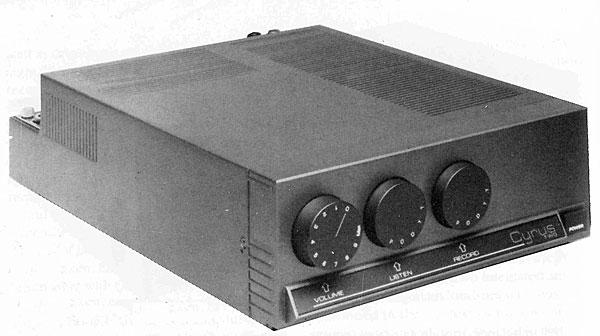| Columns Retired Columns & Blogs |
I've had mine for 30 years and the only thing I had to do was replace the LED for the power indicator.

Farad, however, was effectively the sole driving creative force eight or nine years ago, when I used to regularly visit him at his London apartment and witness stages in the design of a loudspeaker that, in retrospect, would put Mission Electronics on the high-end map. As well as drinking large amounts of his liquor, night after night I would witness Farad putting record after record on his Linn, listening to what seemed to be innumerable prototypes of what became the Mission 770, trying to match the midrange accuracy of the classic "BBC-sound" Spendor BC1 but marrying it to a less loose bass region, more suited to the special requirements of modern LP replay.
And to a large extent he succeeded. I can remember almost painfully exquisite reproduction of Jackson Browne's live Running on Empty album, Emmylou Harris just taking my breath away with Quarter Moon in a Ten-Cent Town, and Dire Straits' Sultans of Swing causing us to boogie until we were disturbed by the early-morning sounds of London's pigeons taking their first cough. The 770 was one of the first speakers to use a polypropylene-cone bass/midrange unit; the combination of an upper-midrange transparency rare at the time of its launch, and low frequencies that, while never quite as tight as those of the Linn Isobarik, nevertheless were "fast" and played tunes effectively, caused the 770 to be the loudspeaker of choice for many UK audiophiles in the early '80s.
Farad and I somewhat lost contact over the following years, and perhaps inevitably, I found myself losing sympathy with the sound of Mission's loudspeakers. While always detailed and fast, and offering excellent value for money, they increasingly featured, in my opinion, a somewhat forward midrange which didn't fit with my awakening tastes for subtlety and restraint in high-end sound. If you take perfection in sound reproduction to lie at the top of a broad-skirted mountain, then you could say that Farad's and my paths toward perfection diverged around opposite sides of the mountain. The destination may be the same, but the incidental scenery is totally different.
Time passed, however, and in 1986 I found myself being drawn again toward the sounds of Farad's brainchildren. Aided by the set-up skills of one of the partners in Mission's Canadian subsidiary, Armi Leonetti, Mission had always obtained excellent sound in their CES exhibits. While the top models in Mission's new generation of loudspeakers, the 770 Freedom and 780 Argonaut, didn't look or sound anything like their distinguished ancestor, the original 770, they sounded good on their own terms. Low frequencies had excellent weight, without the almost universal propensity for box loudspeakers to lose definition in the upper bass, while sensitivity was high, so that the speakers would produce high sound-pressure levels with the relatively modest output power of the Mission amplification.
Intrigued, I spent a weekend at Mission's Canada HQ in Toronto, listening to an Argonaut- and Cyrus-based system put together by Armi. Impressed with what I had heard, I requested a complete Mission system for review, resulting in the words you are now reading. Each piece of equipment—the PCM 7000 CD player, Cyrus Two integrated amplifier, and 780 Argonaut loudspeaker—was first auditioned in the context of my own usual system, based on a Linn Troika/Ittok/Sondek feeding an Audio Research SP10/Krell KSA-50 combination which in turn drives Celestion SL600 loudspeakers on spiked Foundation stands. Interconnects and speaker cables are by Monster; beer by Corona; Scotch by The Macallan. Following that experience, the three components were auditioned as a complete Mission system.

I've had mine for 30 years and the only thing I had to do was replace the LED for the power indicator.